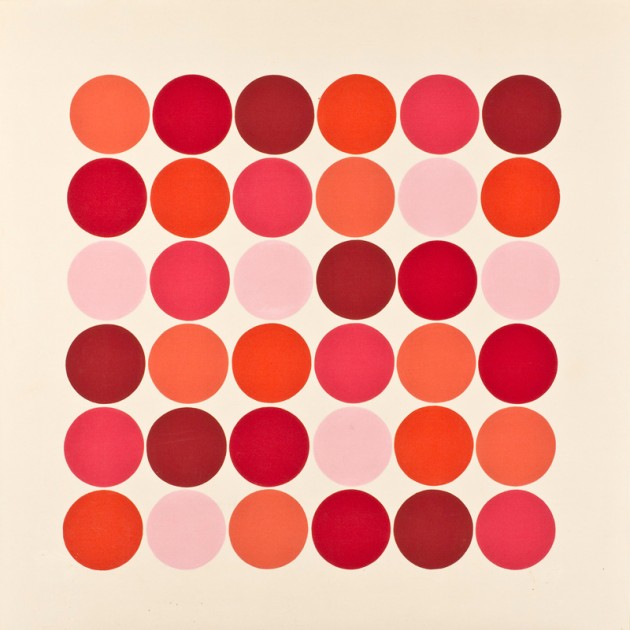Abstract painting assumed a fundamentally new character in the decade of the 1960s as a result of seismic shifts throughout the art world. Abstract Expressionism’s hegemony was on the wane, while the media- and consumer-driven ethos of Pop Art and the “art as pure idea” philosophy of Conceptualism rapidly gained ground with audiences and critics alike. Art circles resurrected the old salvo “painting is dead,” intimating apathy if not outright hostility to the practice. Every artist committed to painting (and especially those dedicated to working in an abstract idiom) had to address the legacy of Abstract Expressionism. These forebears took paintings off the easel and fashioned an art that was raw in execution and full of brio, emanating confidence in the power of personal expression. Purposefully separating themselves from European modernism, they created a distinctively American style of painting. As Frank Stella acknowledged, “Both Pollock and Hoffman solved the problem for me….they established American painting as a real thing for me. I had confidence in it. I could find myself in relationship to Pollock and Hoffman rather than Picasso and Matisse.” SHOW MORE
Their legacy carried with it a challenge for the next generation: which way forward? How could young artists articulate new pictorial ideas that would move the tradition ahead? Surface Truths: Abstract Painting in the Sixties considers the work of 17 artists and the directions they pursued as they moved away from an aesthetic that supported a self-evident creative process to an aesthetic seeking to expunge gesture, pictorial depth and illusion. One answer lay in refocusing attention on the flat, planar surface of the canvas and applying pigment consistently to achieve “an all-overness.” Artists of the 1960s responded to the painterly character of Abstract Expressionism with a cool, linear approach absent of personalized brushwork. In this way, painting referred to itself, rather than to anything outside of it. A significant number of artists redirected their attention to materials. The combination of unprimed canvas, synthetic paint mediums and techniques such as staining made it possible for them to paint in new ways, sometimes without a brush, to achieve the desired effects.
Curators and critics struggled to define the essence of this artistic production, coining terms such as Post-painterly, Lyrical Abstraction, Color Field, Hard-Edge, Minimalist and Systems. Artists such as Larry Bell, Thomas Downing, Helen Frankenthaler, Stephen Greene, Kenneth Noland, Frank Stella and Jack Youngerman produced work that has been included in one or more of these categories. Some artists, Ellsworth Kelly and Agnes Martin among them, were outspoken in dissociating their work from such classifications. Many of these painters belonged to overlapping social and professional circles, providing each other with support for their innovations and efforts. And dealers such as Betty Parsons and Leo Castelli in New York and Irving Blum at Ferus in Los Angeles exhibited them and promoted their work. Surface Truths, drawn from the Museum’s holdings, presents seminal and seldom-seen work by these artists who blazed an important trail through the contemporary art world. SHOW LESS

